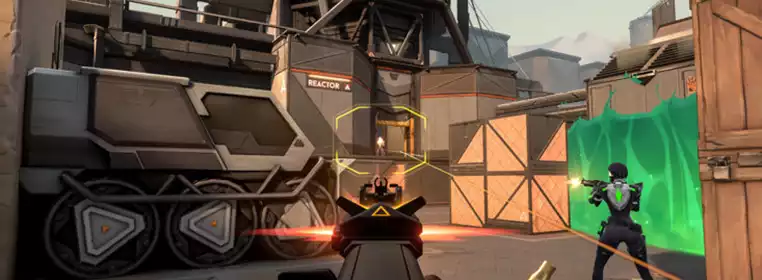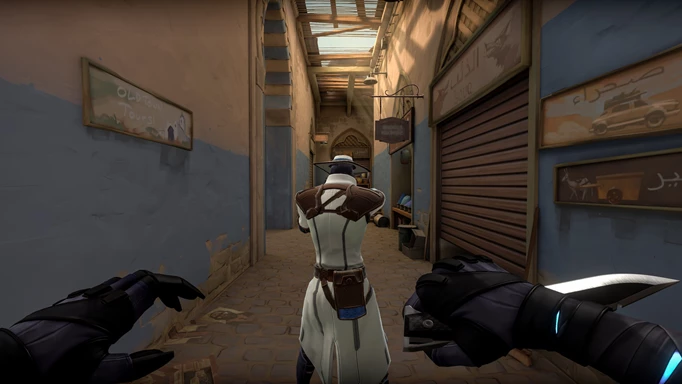Three Core Features to Quickly Improve VALORANT's Esports Experience

VALORANT’s release on June 2nd is around the corner, and with it, an influx of serious competition is to be expected. With the declared mission statement of creating an esport, there come certain obligations for Riot Games to provide to their aspiring player base. Frequent balance updates if needed, monitoring the tournament scene and providing tools to practice are on top of a developer’s duties in nurturing a new esport. Out of the gate, Riot gave us the shooting range, a map which allows players to practice their aim with basic customization options and get a feel for the various guns in VALORANT. As the game approaches launch, more tools for drills and analysis of all sorts will be required.
Replay & observer tools
Sophisticated replay and observer tools are the most basic requirements for every esport. Currently, the observing in VALORANT leaves much to be desired, though it should be expected to change very soon. Suspense builders like X-ray vision to build anticipation for when opponents are likely to see each other and take an aim duels are a proven method to build excitement. Scenic shots from predetermined free cam positions as well as smooth movement around the map are required to set the scene for an engagement. A UI that shows equipment pre-round to explain which team are advantaged is also required, as forgiving as the economy currently is in VALORANT.
Replays are not only a must-have for players and teams to analyze their gameplay but also for frag movie makers to get alternate high-quality shots of the action. The best replay systems are not clunky and allow for quick jumps back and forth, with moderate file sizes to share and host around the web. They also help at the grassroots level, keeping competitors honest in reporting their match scores and help admins make a judgement call in situations where they can’t be present on the server at all times.
Observer slots are currently locked at two, which is not enough to support the number of observers needed to broadcast a high-quality production and also have a team official present.
Competitive practice modes
On top of the practice range that was available on day one of the closed beta, additional game modes such as Death Match and Retake would give players more tools to practice the more important aspects of their game without the preamble of a regular round, making practice much more effective. Retake servers in CS:GO reset the round to a state of post-plant scenarios with varying degrees of equipment, allowing to specifically practice for these high-pressure scenarios.
Due to its mod support, CS:GO allowed mod makers to create 1v1 arenas in a tournament format which featured prominent corners and angles in all kinds of maps, pitting duelists against each other and shoving them up and down the tiers depending on their won and lost fights.
A more casual alternative could be the popular FPS game mode “gun game”, which changes a players gun each time after a kill with the goal of going through the entire arsenal and be crowned the champion by being the first to be the player on the server to get a kill with the last weapon in order.
The game mode “Orb” could be an entirely new approach to custom maps, though it remains to be seen if it lends itself to practice for competitive environments.
On top of established CS:GO custom maps that have shown to be of great value over the years, the VALORANT’s ability and ultimate system could require a new game type which allows you to practice using utility at a higher efficiency. While personal lobbies do a decent job right now, options like instantly teleporting to map locations to see how utility hits at lined up angles across the map could make discovering and practising utility deployment. Other options include the ability to make walls opaque if requested or to place bots via a mini-map to the locations you need them to, while displaying important information like their viewing angles and their health points. These changes would make tinkering around with utility much less frustrating when exploring the game's tactics and strategies by oneself.

 Click to enlarge
Click to enlargeCrowdsourcing ideas
While full mod support is usually a large endeavour for any game to work towards, a version similar to Overwatch’s workshop would give 3rd party developers and hobbyists the ability to create working practice environments by themselves without requiring Riots help. In Blizzard Entertainment’s Overwatch League, professional teams such as the Philadelphia Fusion use self-made custom maps created by their coaching staff for player drills to great effect, saving a lot of valuable time in the process. Giving the community the ability to co-create the necessary game modes alongside Riot would quickly see a spike in the quality of practice we’d see, raising the level of play for those willing to invest into VALORANT.
Images via Riot Games